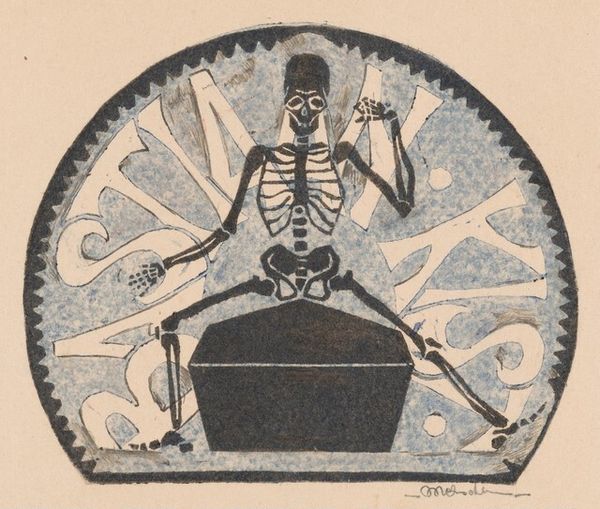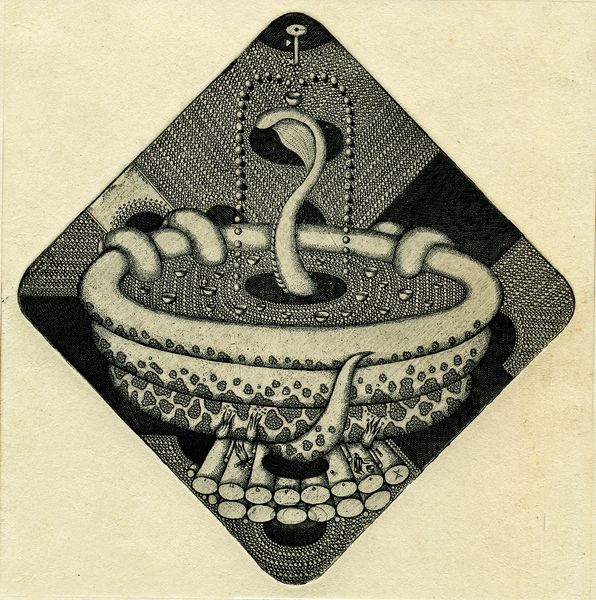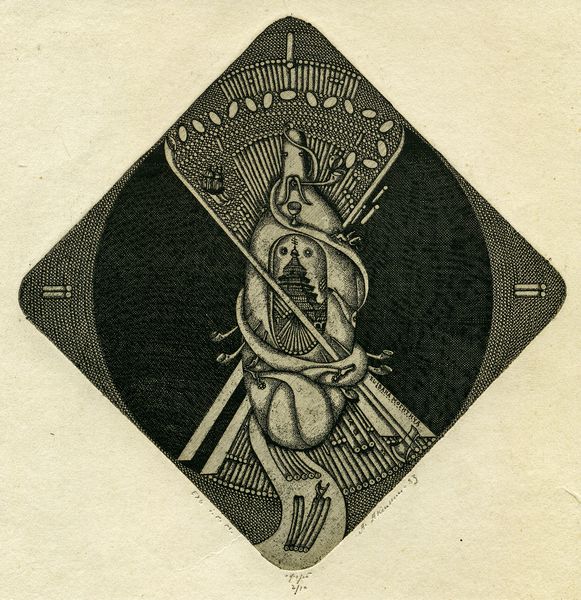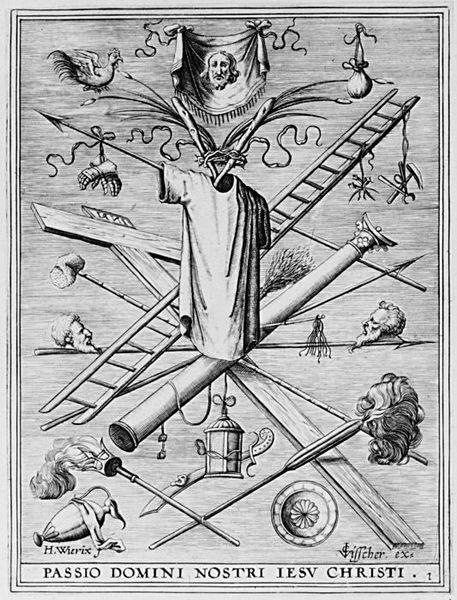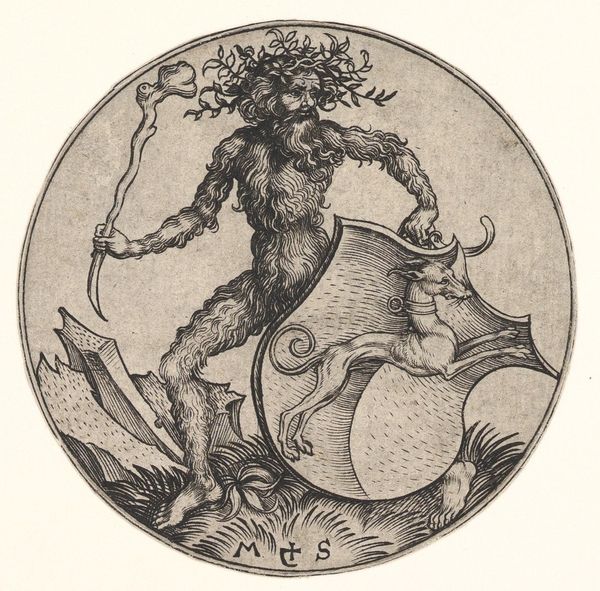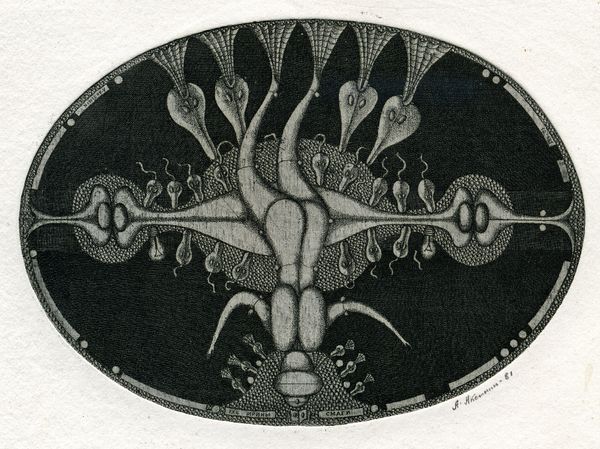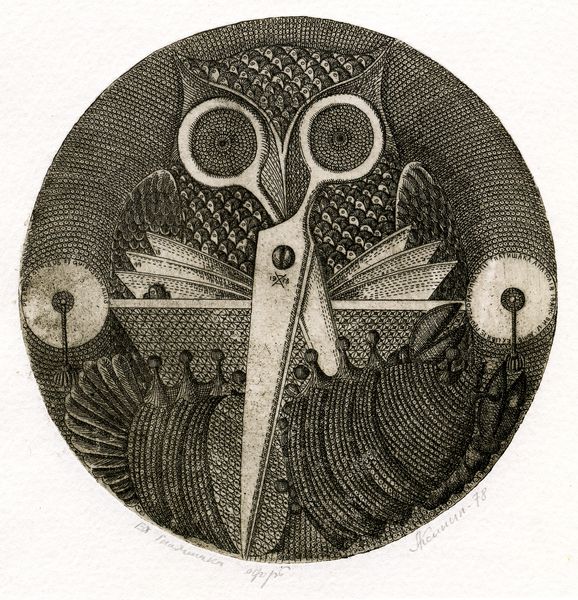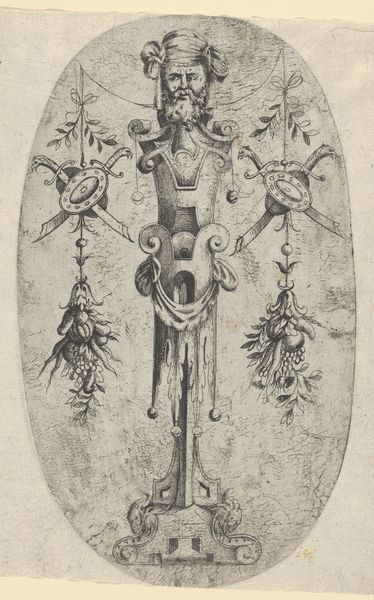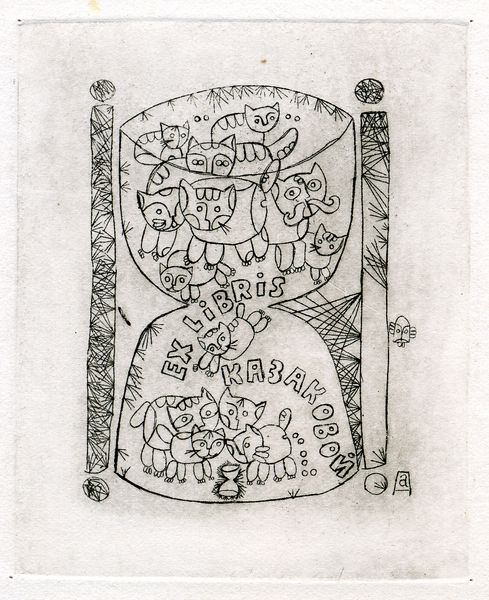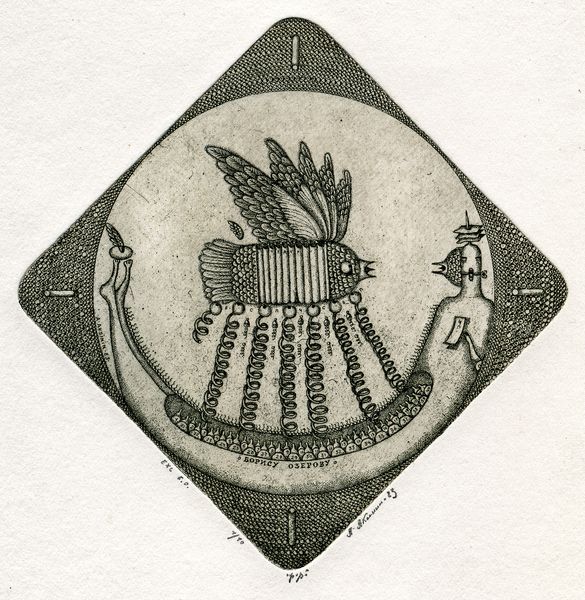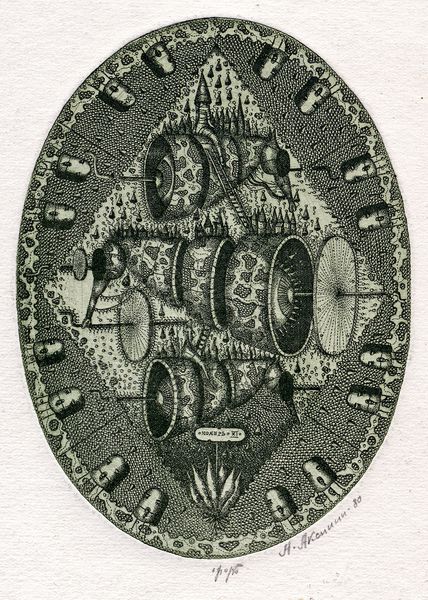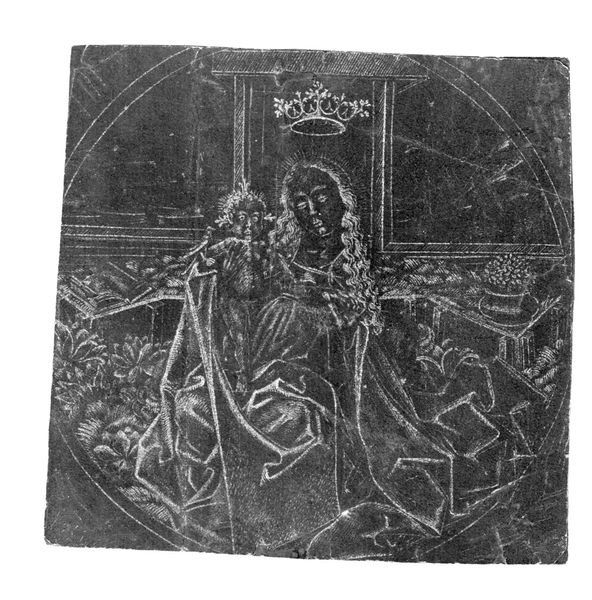
drawing, graphic-art, print, etching, ink
#
portrait
#
drawing
#
graphic-art
#
allegories
#
narrative-art
#
neat line work
#
symbol
# print
#
etching
#
old engraving style
#
crosshatching
#
ink line art
#
vanitas
#
ink
#
dark black outline
#
repetition of black colour
#
thin linework
#
intricate pattern
#
line
#
symbolism
#
reptilian
#
intricate and detailed
Copyright: Public domain US
Curator: Today we're examining "Bookplate Bastiaan Kist," an etching crafted by M.C. Escher in 1916. The artwork is an example of graphic art created through ink on what looks like paper. Editor: The immediate impact is stark; that monochromatic palette emphasizes the starkness of the memento mori theme. It's as if death is both seated upon and radiating from that geometric object; what is it made from, I wonder? Curator: Formally speaking, the composition centers around a skeletal figure perched atop a dark, rectangular shape—likely representing a coffin. Letters interwoven around the image spell out the name of the bookplate's owner. The stark contrasts and thin linework speak to Escher's meticulous attention to detail even early in his career. Editor: Yes, Escher was known for precise lines, yet how were the blocks carved? Given the stark black outline, I wonder if he considered the relationship between tool pressure and resulting line thickness. It’s tempting to consider how social anxiety after World War I manifested materially through the vanitas theme... Curator: Indeed. The vanitas motif is undeniable. The allegories within the print hint at mortality and, perhaps, a meditation on the ephemeral nature of life juxtaposed with the presumed eternal quality of knowledge, books, and art. I appreciate how line serves a symbolic function to suggest mortality. Editor: To build on that point about function, such imagery served a distinct purpose beyond high art within social circles, indicating not only learning but familial standing, especially considering material and production investments. Curator: What a layered and intriguing piece of graphic art, showcasing the symbolic potency of the printmaking tradition! Editor: The experience reminds me that every art object embodies stories that remain hidden without scrutiny of materials and social production.
Comments
No comments
Be the first to comment and join the conversation on the ultimate creative platform.
